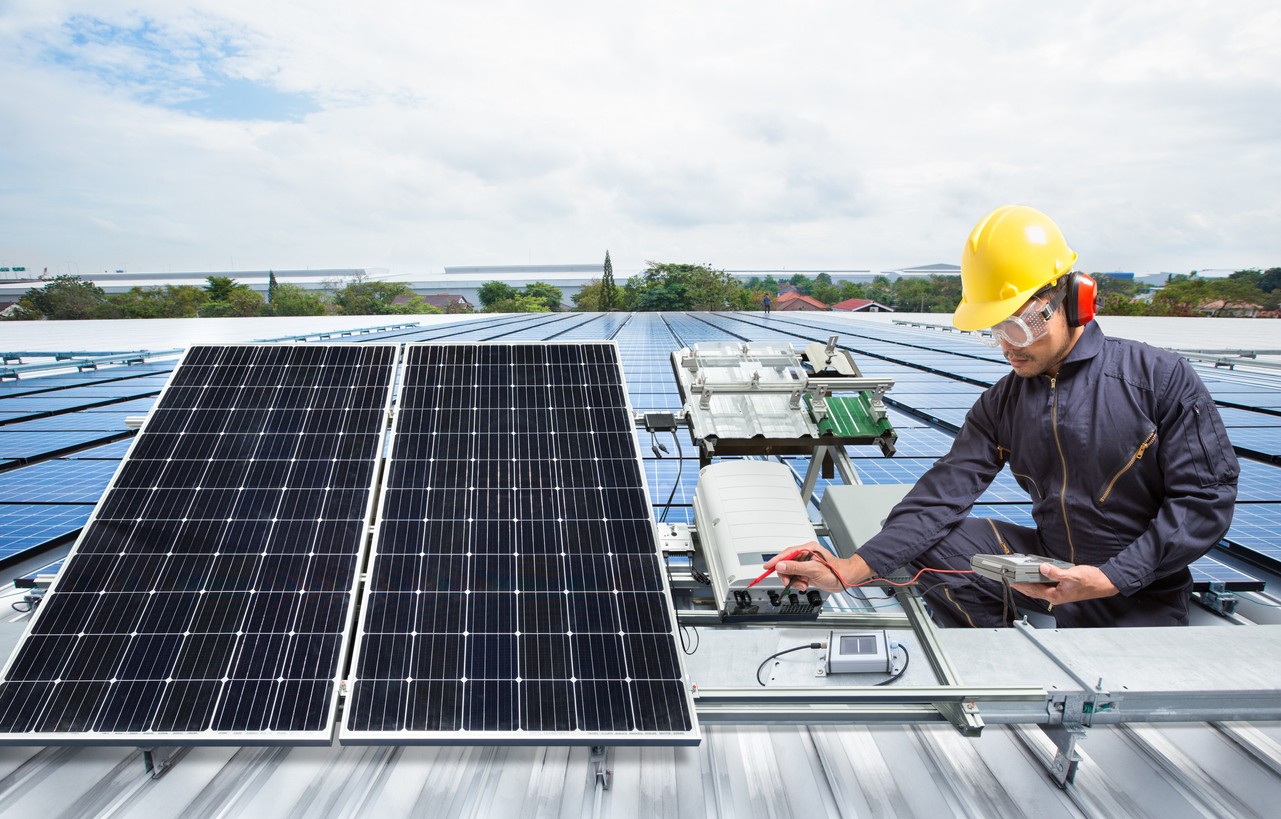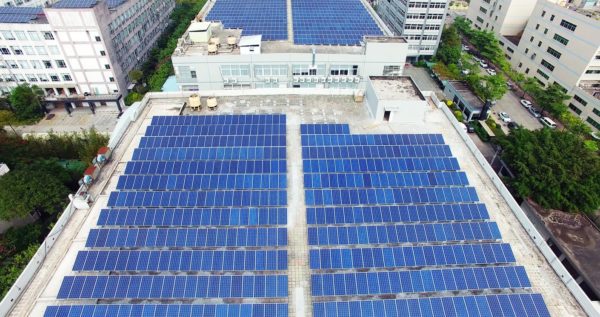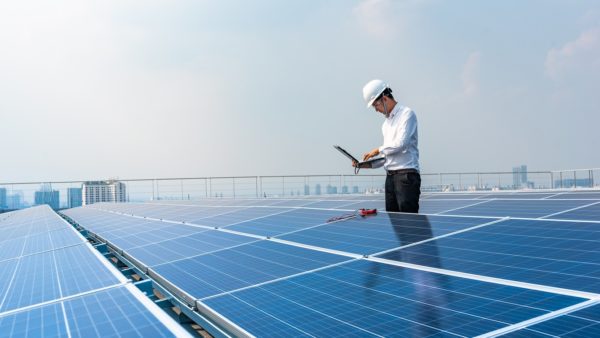
You must have seen only solar panels in a solar energy system, but solar energy has more components than just solar panels. The solar system comprises of various parts, each of which comes in different options. These parts make or break a system’s capacity to function as planned and can provide some exceptional features. Therefore, it makes sense that many people find the commercial solar installation process to be very intimidating.
Coldwell Solar makes solar technologies simple for users. Interested in learning more about how solar panels are put together? Continue reading to learn about the components of a commercial solar system in detail.
The essential parts of a commercial solar panel system are an inverter, solar panel, racking, an electrical panel, the power grid, and the sun. We’ll demonstrate how these elements function together as a complete solar panel system.
Key Components of a Commercial Solar System

Residencies, businesses, and automobiles use solar systems. A solar system consists of several parts that go unseen and unnoticed.
If you decide to use solar energy, you need to know more than solar panels in your system to maintain it properly. Therefore, it is vital to understand your system if you plan to install solar electricity.
Business owners who hire a professional commercial solar installation company should understand how their system operates. You can specify and organize your system more effectively if you know each component’s purpose.
1. Solar Panels
Solar panels in a solar system are the most noticeable component. Most people are usually familiar with this component. You can determine who uses solar energy to power their home by searching for solar panels on their roofs if you go outside and walk up and down your neighborhood because they are easily seen.
Solar panels function when sun energy produces (direct current) DC energy and stimulates electrons to pass through solar cells present in the solar panels.
Solar panels are an essential part of a solar system as they determine how much electricity you can generate from a solar system. Therefore, you must be very careful when installing this component.
Your primary concern should be the system’s performance over time, the durability of the components, the installation process, and the warranties associated with the system because solar energy systems are a long-term investment. The wise choice is to maximize long-term savings than limiting your startup cost.
2. Inverter
After solar panels capture DC electricity, it is sent to the solar inverter. Your building’s equipment and the grid both use alternating current (AC) electricity. The inverter must convert the DC electricity from your solar panels into AC electricity to produce usable power.
Inverters have two most prevalent types:
- String inverters
- Micro inverters
A string inverter is situated on the side of your building, and it gathers all of the electricity produced by your system in one location. Each solar panel has a micro-inverter attached to the underside, allowing DC to be converted to AC on the solar panel.
You can consult your solar specialist for further details on which inverter system is best for you.
3. Racking
Racking or mounting is the third essential part of a solar energy system. It attaches your panels firmly to your roof. Coldwell Solar uses high-quality racking that won’t keep you awake at night thinking about your decision.
Many businesses prioritize quantity above quality, so they hurry through several installations daily to complete as many as possible, risking your house. It is generally known that volume-based, inexpensive, and unaccredited installers take shortcuts, create holes in roofs, leave loose wires, and violate severe safety rules.
While the initial cost may appear high to you, Coldwell Solar takes extra time to ensure the proper steps are taken. We guarantee the performance of your solar energy system, its safety, and as well as the protection of your family.
4. Batteries
The energy produced during the day is stored in solar batteries to be used at night when the system is not producing power. Batteries facilitate businesses that operate at night and power them up the entire night.
If your system generates a lot of energy, you can use a battery to store extra power that you can use later on. It’s essential to prepare a hybrid system from the beginning if you’re considering using this kind of solar power configuration, also known as a hybrid system.
It’s not usually simple to add a battery to a grid-tied system after installation. A battery won’t be required if your solar power system is connected to the grid. A grid-tied system can draw power from the power grid at night too.
But you will need to add a solar battery if you have an off-grid system and require power in the evenings. Batteries are an excellent option for distant residences, small solar homes, cars, and off-grid cabins.
For those who need to use their energy mainly at night, battery technology is a great choice. Batteries cost more to install but reduce your dependency on the grid and result in long-term reductions in your electricity costs.
A feed-in tariff is a price your utility company pays you to put solar energy into the shared energy grid, and some solar owners can use it. You can balance costs by supplying power to the grid and removing it in the evening. You won’t feed extra energy into the grid if you store it in a battery. As a result, you will not be compensated for the extra energy.
Batteries are one of the most expensive parts of a solar power system. It stores extra energy and may not be cost-effective if your feed-in tariff rate is high.
You can find various options for solar batteries in the market. Lithium and lead-acid batteries are the most common types of batteries in the solar energy sector. You can utilize sealed AGM batteries or flooded lead-acid batteries within the lead-acid category. Other types include:
- Lithium-ion
- Lead-acid
- Flow
- Nickel-cadmium
Each battery type has pros and cons. However, lithium-ion batteries are overtaking other types of batteries in popularity because they never need routine maintenance. Lithium-ion batteries can store more solar energy in a smaller volume than lead-acid batteries.
5. Electrical Panel
Solar panels are connected to the electrical panel of your building, which can then supply electricity as required. As a result, you may now use the energy your solar panels produce to power your business. The electrical panel works as a switchboard. It collects power from your utility provider or solar system and sends it to the circuits that power everywhere you need it.
6. Power Grid
You can send extra energy to the grid if your solar panels produce more electricity than your business needs. On the other hand, energy will be extracted from the grid if you use power during periods when your solar panels aren’t generating it or if you use more energy than they generate.
The electric meter plays a significant role here. It tracks the amount of electricity coming into and leaving your commercial building, enabling business owners with solar panels to reduce their monthly energy costs.
7. Sun Energy
The sun provides energy to every solar system. Instead of producing energy, a solar system transforms solar energy into electricity that can be used in your building. The components of a typical solar panel include a layer of silicon cells, a glass enclosure, a metal frame, and wiring to allow current to flow from the silicon cells.
Since silicon is not a metal and has conductive qualities, it can absorb sunlight and turn it into electrical energy. When the light comes in contact with a silicon cell, it sets electrons in motion, causing an electric current to flow.
The general operation of solar panel technology is described as the photovoltaic effect. This implies that your solar panels can produce energy as long as the sun is out. Your panels can still produce electricity on cloudy days since the sun’s rays can get through the clouds.
Solar Services from Coldwell Solar

There are a lot of essential choices to make when you pick the components for your solar system. If you are new to solar energy, contact Coldwell Solar for information about all the equipment you need for your solar system.
A commercial solar energy system is a fantastic method for businesses of all kinds to cut operating expenses and lessen their total environmental impact, which is good for the company, its shareholders, and the environment.
Solar systems can improve a company’s financial and environmental stability without significantly disrupting day-to-day operations with the help of clean energy generation and on-site. Start your commercial solar project today with the help of our experienced team!

